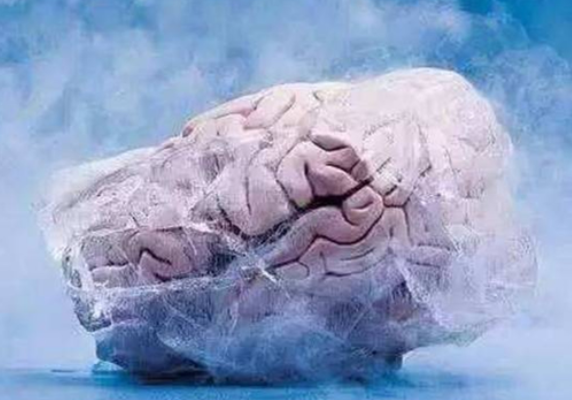Is it possible for the first frozen person in 1967 to be resurrected?

It has been frozen for more than 50 years, and the thawing period has passed. Is it possible for the first frozen person in 1967 to be resurrected? Two years have passed since the first frozen person was thawed in 1967. There is no hope of technological resurrection. Can frozen resurrection be realized in the future?
For example, hemolysis occurs when red blood cells are thawed after they have been destroyed. Experiments in 1955 showed that the active time of mouse resurrection was 4 to 7 days. Research on other naturally frozen animals has also been somewhat instructive.
Although the early freezing methods were relatively primitive, some experimental results were also obtained:
For example, frozen hamster brains can be revived with 60% crystallization without much adverse effect on the brain. However, the body organs of these hamsters suffered greater damage and could not survive for a long time.
- But the biggest problem with freezing is the destruction of the cells by the ice crystals formed by the freezing of water inside the cells.
- Dehydration of cells can also create a high-salt environment, which can damage cells.
- Even when the cells are emptied of fluid, the external ice crystals can cause some stress damage to the cells.
- Theoretically speaking, the resurrection of frozen people is possible.
- But the difficulty is far beyond the imagination of ordinary people.
- Since the 1950s, people have been keen on freezing experiments.
In the natural state, there are not a few animals that can be frozen and resurrected.
- When tardigrades are frozen, trehalose in the body can prevent the crystallization of body fluids and avoid damage to the cell membrane.
- Wood frogs can also use urea and glucose in their bodies to avoid crystallization during freezing.
- Read More:- Google Scholarship 2023: Google is giving a scholarship of 74 thousand, start filling online form

Solutes that can avoid crystallization are called ” cryoprotectants “.
However, the difference between natural organisms and artificial freezing is that natural organisms, in addition to using natural “cryoprotectants”, their bodies also have powerful repair capabilities.
For example, wood frogs can tolerate up to 65% body crystallization, and can even endure repeated freezing in winter.
Currently, there are 5 species of frogs, 1 species of salamander, 1 species of snake, 3 species of sea turtle, 1 species of tortoise, and 1 species of gecko that can be revived in natural freezing.
But without exception, all are cold-blooded animals.
Although the frozen resurrection experiment of vertebrate individuals is not easy, the freezing technology is quickly applied to the cellular level.
It has been found that as long as the freezing rate is slow enough (1°C/min), the liquid in the cells can seep out enough to avoid internal crystallization.

During this period, not only did the first human freezing experiments occur, but freezing also began to be widely used in cell biology.
For example frozen oocytes, skin, blood products, embryos, sperm, stem cells, etc.
At that time, the number of frozen embryos was as high as 3 million, and the live birth rate was about 20%. It has been clinically proven that frozen embryos from IVF can reduce stillbirths and preterm births compared to fresh embryos from IVF. The specific reasons are still under investigation.
In the 1980s, vitrification technology was developed-through rapid cooling, the formation of amorphous ice without crystallization.
- The cooling rate is as high as 136K/millisecond, that is, the temperature is lowered by more than 1 million K per second, and amorphous ice can be naturally formed.
- While crystalline ice is the most common on Earth, amorphous ice may be more common in the universe.
- Read More;- The study shows GISAID that there are no new variants, and the strain of the current wave of the epidemic in China is similar to the recent global spread.

Of course, by adding a cryoprotectant, the freezing point can be lowered and the viscosity can be increased, thereby reducing the difficulty of vitrification. Experiments have shown that vitrification preserves “perfection” better than slow freezing.
Around 2000, vitrification was officially used for the clinical cryopreservation of oocytes. Not long after, a medical company successfully vitrified the kidneys of rabbits and successfully transplanted them after rewarming them without loss of function.
So far, the vitrification of human transplanted organs is still being actively explored, and it may be realized shortly.
Although from the level of cell tissue, freezing technology has been a great success.
However, the freezing of the human brain and body still faces many problems.

Although many supporters of ultra-low temperature technology believe that the vitrification of the brain can ensure that the brain is not damaged, and the retention of brain information is enough to revive consciousness in the future. But some people believe that the human mind is separate from the brain, and after death, the consciousness will leave the body. At this time, if they were resurrected, they would either become empty shells or become another person.
In fact, from the perspective of continuous consciousness, as long as the brain is well preserved, it is certainly possible for consciousness to recover. This is essentially the same as sleeping and waking up from a vegetative state, but not much different.
But the point is, how is the brain preserved?

The current human cryonic experiments are all done after clinical death.
Generally, within 5 to 8 minutes of cardiac arrest, it is called the clinical death period.
For those who died clinically, their breathing and heartbeat stopped, and the central nervous system function was abnormal, but it was still in a reversible state.
If the heartbeat stops for 3 to 4 minutes, the brain will be irreversibly damaged.
After 5 minutes, there will be more obvious damage to the brain, and obvious sequelae will appear after the rescue.
That is, even without freezing. According to the clinical death standard, even if it can be revived, there will be brain sequelae. WhatsApp was exposed to a big data leak: Hackers sold nearly 500 million user information
But the vitrification process (some even not) at the time of freezing can take several hours. Even if the protective fluid can be replaced in time in the beginning and the temperature is lowered enough, from the judgment of clinical death to the cooling, the degree of damage that the brain can withstand will be exceeded.
No one is sure how damaged the brains of these clinically dead people were when vitrification was done.

And even if it can be preserved completely without damage, the preservation time cannot exceed 1000 years (all kinds of radiation will damage DNA, and as long as it does not reach absolute zero, cells will have molecular movement).
Therefore, after the vitrification technology is sufficiently developed (currently at the level of cell tissue), even if it can be frozen and thawed without damage, it still needs to face the problem of how to repair a damaged brain.
Indeed, sufficiently developed nanotechnology in the future could theoretically repair the brain.
But after nanotechnology repairs, it will inevitably challenge the continuity of consciousness.
- When a brain is damaged by 10%, it will be repaired by future nanotechnology, and after the resurrection, 90% of its original consciousness will be retained, and we can barely call it the original person.
- But if 90% is damaged and only 10% remains after repair, is that person still the same person?

Of course, this problem can also be thought of to solve:
That is to perfectly reproduce a piece of brain molecular (or atomic) information through advanced quantum computer intelligence technology. And in the case of freezing, every once in a while, let the nano-robots repair the naturally damaged brain molecular details according to the molecular information of the brain before death.
In this way, it can be preserved forever, and it also ensures the continuity of consciousness.
However, after reaching such a technology, various paradoxes will still arise:
E.g:
- I took out all the atoms in the original brain and rebuilt the same brain, so when this person wakes up, is he still the same person?
- Or, use atoms from the outside world to directly copy an identical brain, and when he wakes up, who will it be?

In short, according to the current facts of clinical death freezing and the technical ceiling of freezing, all the frozen people in the past have almost no hope of resurrection. After the successful thawing and awakening of brain cells, the survival rate of all nerve cells will be much lower than normal, and they will die again soon.
| Google News | Follow | Click Here |
| Telegram | Follow | Click Here |
| Quora | Follow | Click Here |
Follow | Click Here | |
Follow | Click Here | |
| Dailyhunt | Follow | Click Here |
What’s more, many frozen people died because of terminal illnesses, and in the future, there must be technologies to solve related terminal illnesses in order to be resurrected.
- Of course, compared to the nanoscale repair technology of the brain, these are actually nothing. If you can do the former, you must be able to do the latter.
However, in the future farther than us, it is possible to resurrect well-preserved frozen people who are closer to the future than us.
But even with such technology, it is quite a challenge for human brain repair.
For a 90% damaged cerebral cortex, even if only 10% is damaged, the nanorobot needs to repair as many as 1024 nano units.
Using the future super quantum artificial intelligence robot to control 100 million nano-robots to perform simultaneous repairs, repairing a nano-level unit per second, also needs to be repaired: 317097919 years or 300 million years.
Of course, it is also possible to establish spatial functions at the molecular level of the brain and perform similarity repairs, so that the repair speed will be much faster.
But after repairing in this way, the question of whether the resurrected person is still the same person will still be faced.
And, in that society, people would be more interested in tinkering with themselves (the living) than risking resurrecting a loved one who might no longer be the person they once were.
- Of course, there will always be a certain percentage of people who will take risks to do it.
There were bound to be corresponding ethical rules and legal constraints in society at that time.









